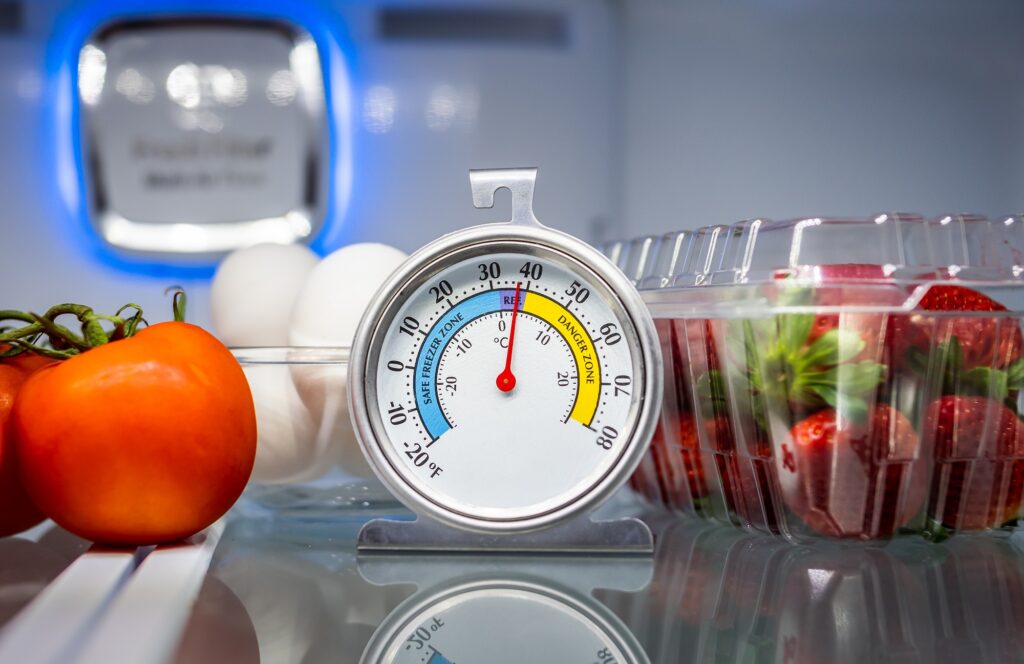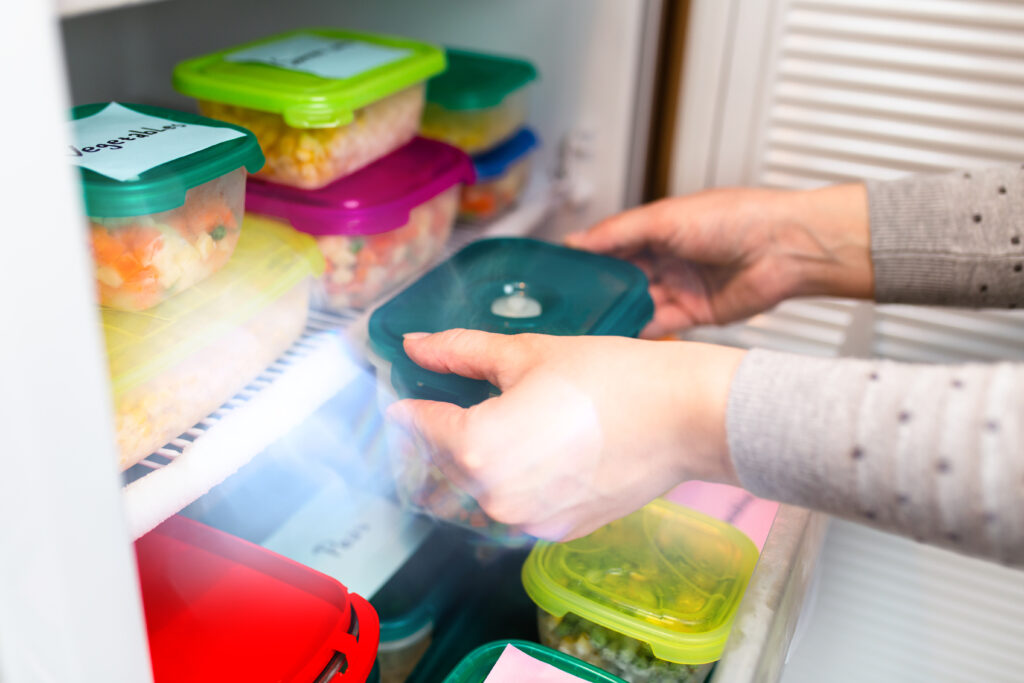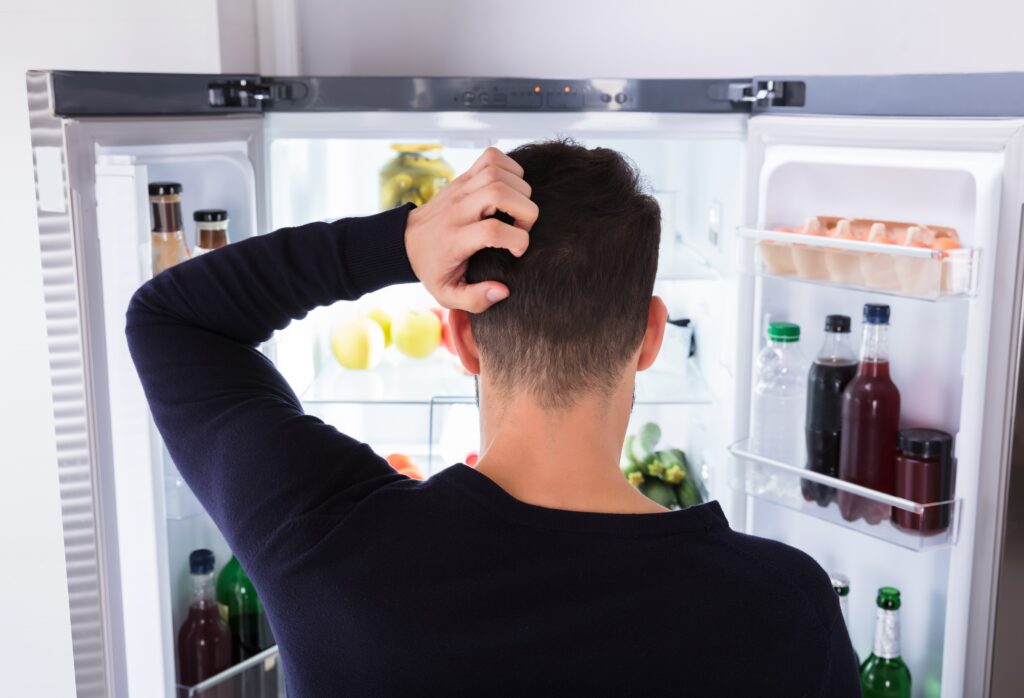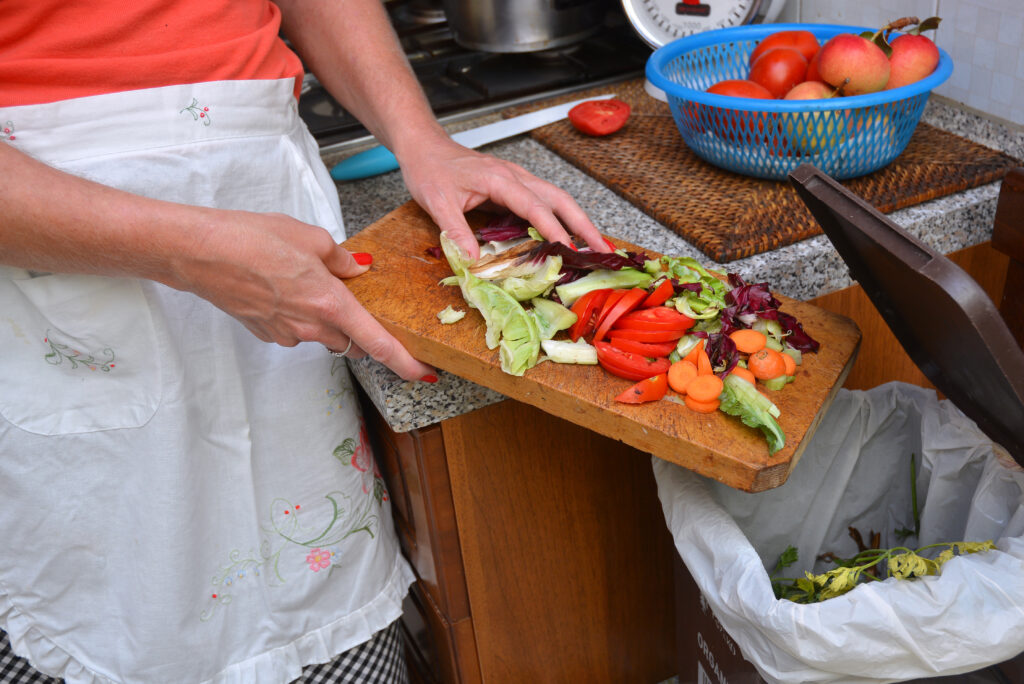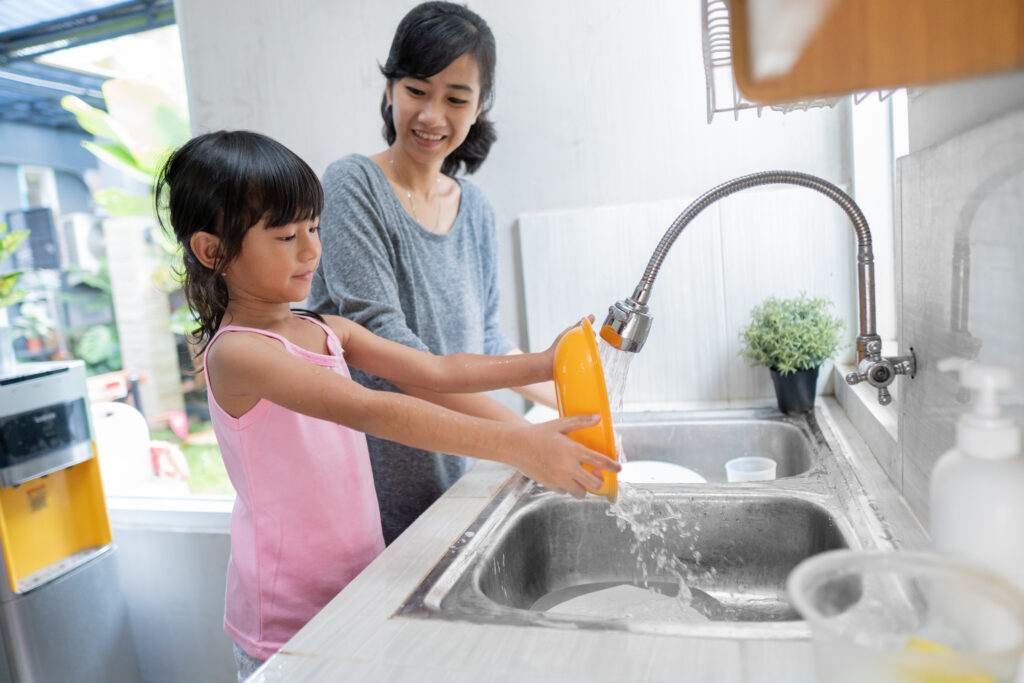During a power outage, the clock starts ticking on the safety of your perishable foods. If you are aware of an approaching storm, tornado, hurricane or high electricity use, you can be prepared.
Before the Storm
- If you can prepare in advance, make sure you are using appliance thermometers in your fridge and freezer.
- Have a cooler or two at the ready, filled with ice or several frozen gel packs.
- Research where dry ice or block ice are available near you.
During the Storm
- Once the power goes out, be mindful of time and temperature.
- Keep the refrigerator and freezer doors closed.
- Your refrigerator will hold a safe temperature for about four hours.
- Your freezer, if packed full, will hold food at a safe temperature for about 48 hours with no power — at half full, the time decreases to 24 hours.
- Food is safe to refreeze if it still has ice crystals or if the freezer did not rise above 40 °F.
After the Storm
- When the power is back on, check the temperature inside your freezer and refrigerator by looking at the thermometer.
- If the temperature is still 0 ⁰F or below for freezer and 40 ⁰F or below for refrigerator, your food should be fine.
- NEVER taste food to determine its safety.
- The following foods are safe if held above 40 ⁰F for more than 2 hours: hard cheeses, grated Parmesan cheese, butter or margarine, opened fruit juices, jelly, relish, taco sauce, mustard, ketchup, olives, pickles, and Worcestershire, soy, barbecue and Hoisin sauces, peanut better, opened vinegar-based dressing, bread products, breakfast breads, fruit pies, fresh mushrooms, herbs, spices, uncut raw vegetables and fruit.
- What you should throw out: meat, poultry or seafood products; soft cheeses and shredded cheeses; milk, cream, yogurt, and other dairy products; opened baby formula; eggs and egg products; dough, cooked pasta; cooked or cut produce.
After a Flood
- Do not eat any food that may have touched flood water.
- Discard food that is not in waterproof containers; screw-caps, snap lids, pull tops, and crimped tops are not waterproof.
- Discard cardboard juice/milk/baby formula boxes and home-canned foods.
- Discard any damaged cans that have swelling, leakage, punctures, holes, fractures, extensive deep rusting, or crushing/denting severe enough to prevent normal stacking or opening.
- Mix a sanitizing solution of 1 Tablespoon of unscented bleach with one gallon of water to disinfect pots, pans, dishes, utensils, and undamaged all-metal cans after removing the label. Relabel with a permanent marker.
Preparing for disasters in advance is helpful to provide peace of mind. Knowing how to manage our food supply before, during and after a disaster will be essential to living.
For more information contact your local extension office or check out PFSE resources.
** Reprinted from Idaho State Journal. **
